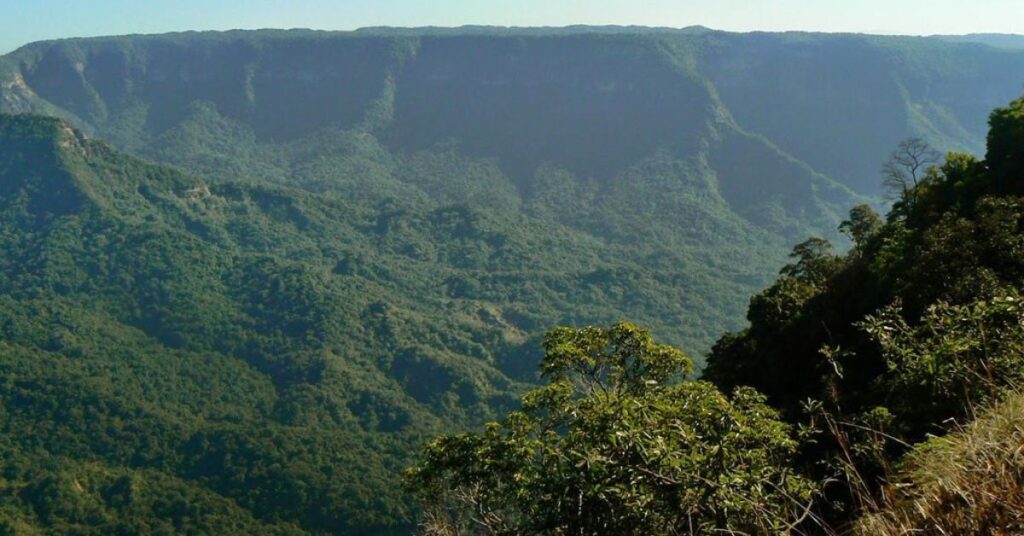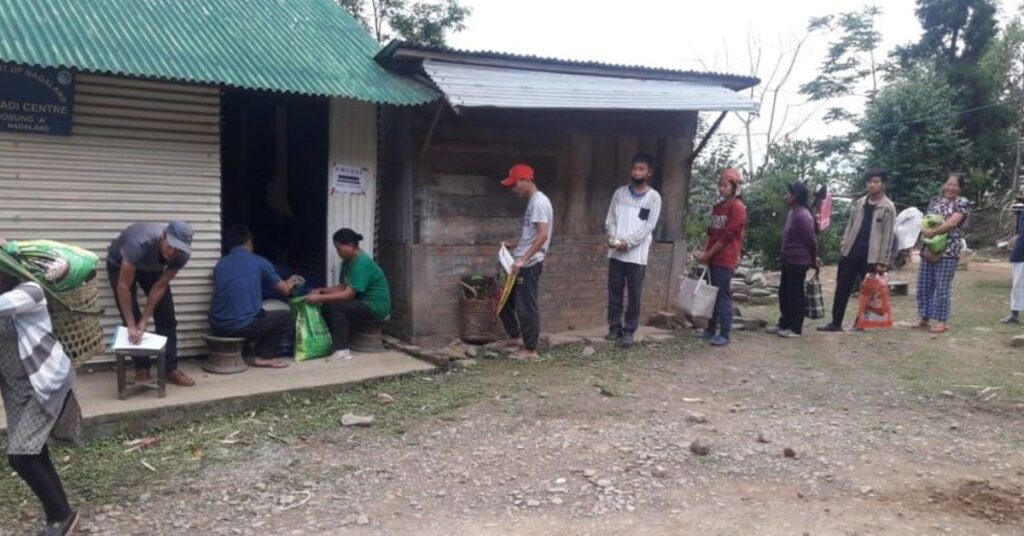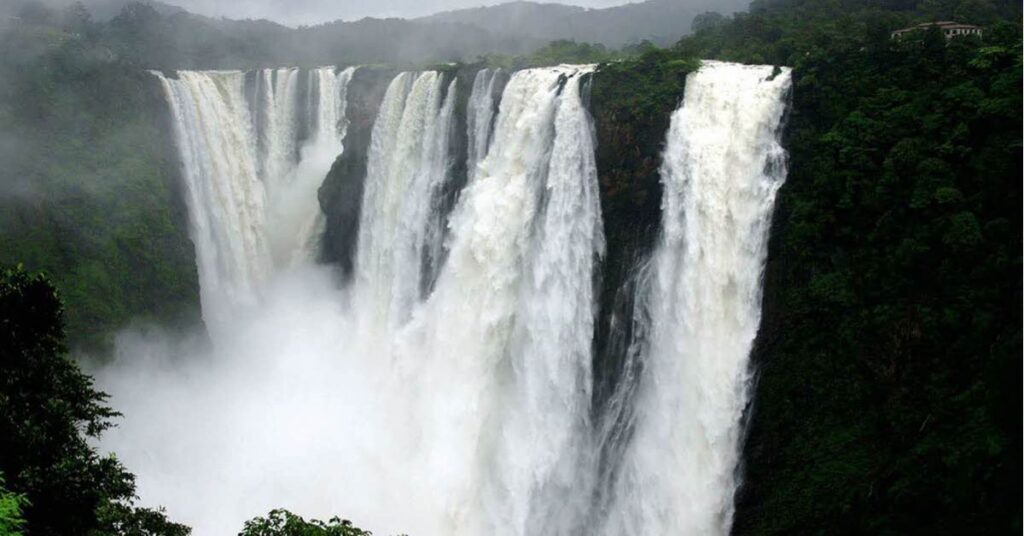Mount Pauna is a hidden gem nestled in Nagaland’s wild heart. This towering peak offers a thrilling escape into nature’s embrace. Surrounded by lush green forests and distant wildlife sounds, the climb to the top is an adventure filled with breathtaking views. Pauna isn’t just a mountain; it’s a chance to connect with Nagaland’s raw beauty and rich culture. This guide will help you explore this amazing place and make the most of your adventure.
How to reach:
Air: The nearest airport is Dimapur (DMU), about 150 km away. From here, hire a taxi or pre-book a transfer to Wokha, a roughly 3-4 hour journey.
Train: Dimapur railway station is the closest railhead. Take a taxi or bus to Wokha from there.
Road: Wokha is accessible by road from Kohima, Nagaland’s capital, about 85 km away.
Local Transport: Once in Wokha, hire a local taxi or jeep to reach the base of Mount Pauna. This final leg can take 1-2 hours depending on the starting point.
Bus: Buses connect Dimapur and Kohima to Wokha, offering a budget-friendly option.
Best time to visit:
October to April: Peak Season
This period offers the best weather for trekking. Expect pleasant temperatures, clear skies, and dry trails. It’s perfect for enjoying the outdoors and experiencing local festivals.
May to September: Monsoon Months
While the monsoon brings lush greenery, it also means heavy rain, high humidity, and potential landslides. Trekking can be challenging due to muddy trails. If you’re prepared for these conditions, you might enjoy the unique monsoon atmosphere. However, be cautious and check weather forecasts before heading out.
Attractions:
Mount Pauna Peak:

Mount Pauna is a stunning mountain with amazing views. Climbing it is an exciting adventure through beautiful forests. The top of the mountain offers a breathtaking look at the rolling hills and green valleys below. It’s a challenging climb but totally worth it. Reaching the top feels peaceful and amazing, surrounded by such beauty. Whether you love adventure or just want to relax in nature, Mount Pauna is the perfect place.
Vankhosung:

Vankhosung is a special village near Wokha. It’s where the first American people came to teach about Christianity in Nagaland. You can still see old buildings from that time. The village is beautiful, with green hills and the traditional homes of the Lotha people. It’s a great place to learn about the history and culture of the area.
Tsungiki Waterfalls:

Tsungiki Waterfalls are a stunning sight! The water crashes down beautifully into a green, peaceful setting. It’s a perfect place to relax and enjoy the cool mist. You can swim in the clear water or just sit and admire the view. It’s a nice change from the excitement of climbing Mount Pauna.
Local Experiences:
- Delight in local flavors like smoked pork, bamboo shoot curry, and axone.
- Immerse yourself in the vibrant Tokhu Emong festival.
- Explore traditional Lotha villages and their craftsmanship.
- Learn local crafts through hands-on workshops.
- Enjoy traditional Lotha music and dance performances.
- Discover nature on guided local walks.
- Relax with fishing or boating on Doyang Lake.
- Experience authentic Lotha hospitality through homestays.
- Participate in local ceremonies and rituals.
- Shop for handmade treasures at local markets.
- Discover diverse birdlife on guided birdwatching tours.
- Learn traditional cooking, weaving, and other skills.
Travel tips:
Obtain Necessary Permits: Ensure you have the required Inner Line Permit (ILP) before your trip.
Check Weather Conditions: Plan your trek during the dry season (October to April) for optimal conditions.
Prepare for the Trek: Pack suitable hiking gear, including sturdy boots, a backpack, and layered clothing.
Hire a Local Guide: Consider hiring a local guide for safety and insights.
Pack Essentials: Bring sunscreen, insect repellent, a first-aid kit, and snacks.
Respect Local Customs: Be mindful of local traditions and ask for permission before taking photos.
Purchase Travel Insurance: Consider travel insurance for added protection.
Carry Sufficient Cash: Be prepared as ATMs might be limited.
Prioritize Health: Stay hydrated, acclimatize, and consult a doctor if needed.
Arrange Transportation: Book transportation in advance, especially during peak seasons.
Protect the Environment: Practice responsible tourism by minimizing your impact.
Know Emergency Contacts: Keep emergency contact information handy.
Conclusion
Mount Pauna, a majestic peak in Nagaland, offers breathtaking landscapes, challenging treks, and a deep immersion into the region’s natural beauty and rich cultural heritage. From the thrill of the ascent to the serene summit, Pauna promises an unforgettable adventure. Explore lush forests, encounter diverse wildlife, and engage with local communities for a holistic experience. Follow Xplro for more travel guide blogs like this and please comment your opinion also.
FAQs
1. What makes Mount Pauna a popular destination?
- Mount Pauna is celebrated for its stunning panoramic views and adventurous trekking paths. It’s a favored spot for outdoor enthusiasts and nature lovers wanting to experience the rugged and scenic beauty of Nagaland’s highlands.
2. When is the most suitable time to visit Mount Pauna?
- The best time to visit Mount Pauna is from October to April, when the weather is generally clear and pleasant, ideal for trekking. The monsoon season, spanning from May to September, brings heavy rains, which can make the trails slippery and challenging.
3. Is a permit required to visit Mount Pauna?
- Yes, visiting Nagaland, including Mount Pauna, requires an Inner Line Permit (ILP). This is mandatory for Indian tourists from outside Nagaland and for all foreign visitors. The ILP can be obtained online or from authorized offices in major cities and in Nagaland.
4. What are the transportation options to reach Mount Pauna?
- To reach Mount Pauna, you can fly into Dimapur Airport, which is about 150 kilometers away, or take a train to Dimapur Railway Station. From Dimapur, you can travel to Wokha by taxi or bus and then use local transport to reach the base of Mount Pauna. Alternatively, Wokha is accessible by road from Kohima.
5. What items should I bring for a trek to Mount Pauna?
- Essential items for trekking Mount Pauna include durable hiking boots, a comfortable backpack, rain gear, layered clothing for varying temperatures, sunscreen, insect repellent, a first-aid kit, and energy-boosting snacks. Also, carrying sufficient water and a camera is recommended.
6. Are local guides available for trekking Mount Pauna?
- Yes, local guides and porters are available and are highly recommended. They assist with navigating the trek, ensuring safety, and providing local insights and knowledge about the environment and culture.
7. What cultural practices should I observe?
- Respect local customs by dressing modestly, asking permission before photographing people or religious sites, and adhering to traditional practices. Engaging respectfully with locals and following their guidelines will enhance your visit.
8. What activities can be enjoyed around Mount Pauna?
- Activities around Mount Pauna include trekking to the peak, boating and fishing at Doyang Lake, visiting historical sites like Vankhosung, enjoying views from Totsu Cliff, and experiencing the beauty of Tsungiki Waterfalls. Local cultural activities and village visits also offer enriching experiences.
9. Is Mount Pauna a good destination for novice trekkers?
- The trek to Mount Pauna is relatively demanding, with steep and rugged terrain. It is more suited for those with some trekking experience. Beginners may prefer less challenging trails or seek guidance from experienced trekkers.
10. Where can I stay near Mount Pauna?
- Accommodation options are available in Wokha, including guesthouses, lodges, and homestays. It’s advisable to book your stay in advance, especially during peak tourist seasons, as accommodation near the trek base may be limited.
11. What wildlife might I encounter around Mount Pauna?
- The area around Mount Pauna is rich in biodiversity, including various bird species like the Amur Falcon, as well as mammals and insects. Bird watching and wildlife spotting are rewarding activities for nature enthusiasts.
12. How can I ensure a safe trekking experience?
- To ensure a safe trekking experience, consider these tips: hire a local guide, prepare with appropriate gear, check weather conditions, stay hydrated, acclimate to the altitude, respect local wildlife, and inform someone of your travel plans. Following safety guidelines and being mindful of your surroundings will contribute to a safe and enjoyable trek.




